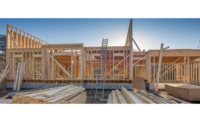To populate this database with both stalled projects and investors interested in financing them, the AIA initiated a communications campaign to solicit information about stalled projects around the country from its members and allied professionals. Since going live on Oct. 31, the site has attracted projects seeking a total of almost $230 million in financing. The AIA expects these numbers to grow as word spreads throughout the architecture profession about this initiative.
By creating a log-in and clicking inside the “Get Started Now” box on the site, architects and developers can fill out a form and tell investors about their projects. By clicking in that same box, investors list their companies and tell project leaders about their firms and the types of investments they are interested in making. Once registered, both project owner and investor can see details on stalled projects or peruse investor information.
“In large part the fortunes of the entire U.S. economy rest on whether the design and construction industry can create jobs,” said AIA PresidentClark Manus, FAIA. “For months, our industry has continued to suffer primarily because banks won’t lend. With this unprecedented online database portal, the AIA has decided to do something that could create more jobs and help grow the economy.”
The site was officially launched in conjunction with an AIA report,“Stalled Construction Projects and Financing,”which noted that the share of projects stalled due to financing problems through August 2011 has almost doubled since 2008; one-in-five stalled projects directly result from financing problems, despite record-low interest rates.
“Since the end of 2008, construction spending in the U.S. has declined by more than a quarter, or by almost $300 billion, with the loss in this sector alone accounting for a 2-percent decline in the size of the U.S. economy,” the report stated. “With residential structures and nonresidential buildings accounting for about two-thirds of total construction activity at present, the losses in home and building construction could have generated another $470 billion in indirect losses to our economy, even if we ignore the indirect benefits from public works construction.”
Relying on data compiled by McGraw-Hill Construction and Reed Construction Data, the report also found:
- Financing problems account for a higher share of stalled projects in the education and multifamily sector;
- More than 25 percent of projects reported as stalled due to the credit crunch could qualify for LEED, Green Globes or other green certification status; and
- Financing issues are less of a factor holding back projects in the manufacturing, private health care and retail environments.
The AIA designed its database to help address this most-persistent impediment facing the design and construction sector. Each $1 million in new construction spending supports 28.5 full-time, year-round-equivalent jobs, according to a study by George Mason University economistStephen J. Fuller.
Source: American Institute of Architects.

